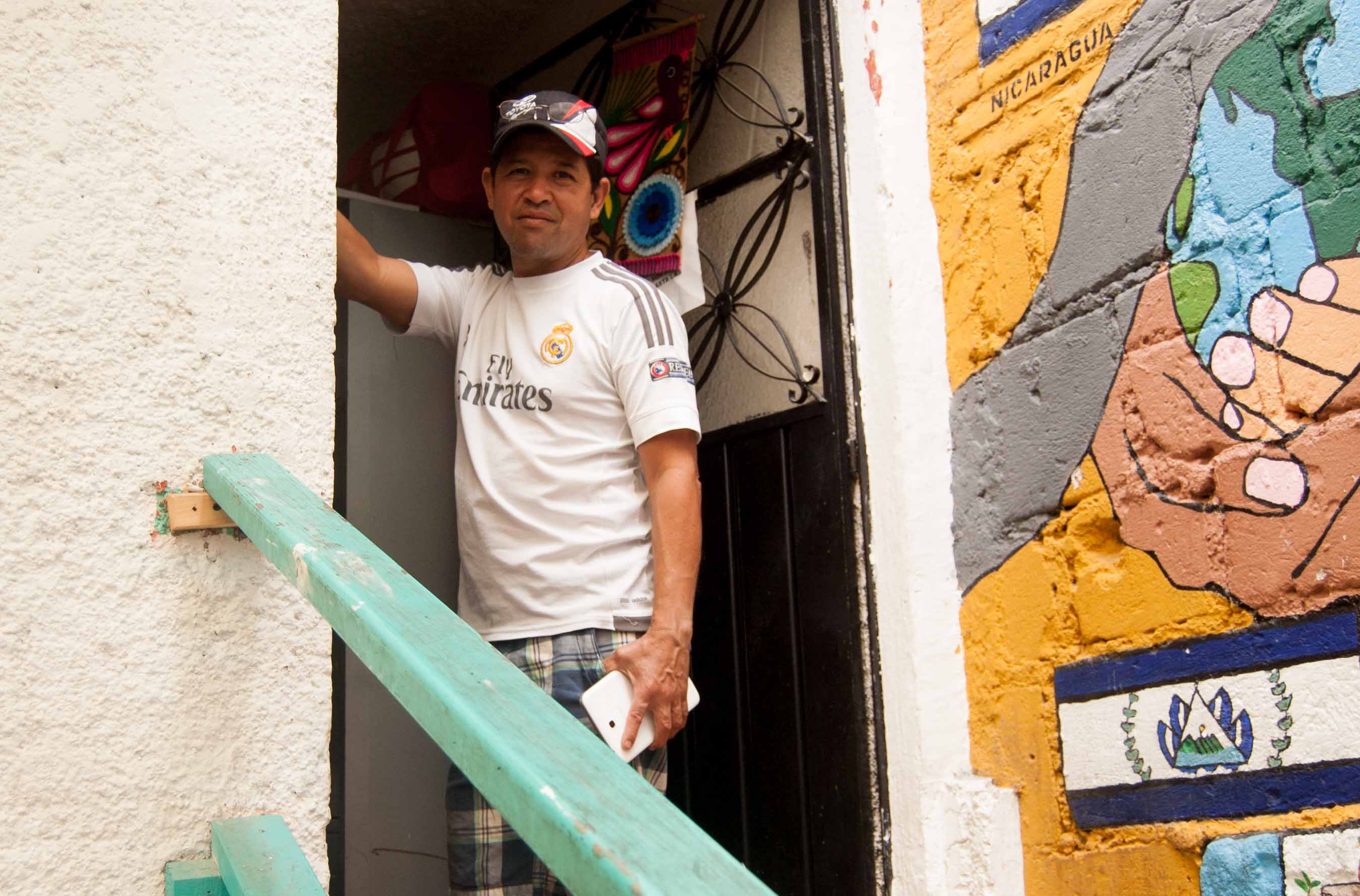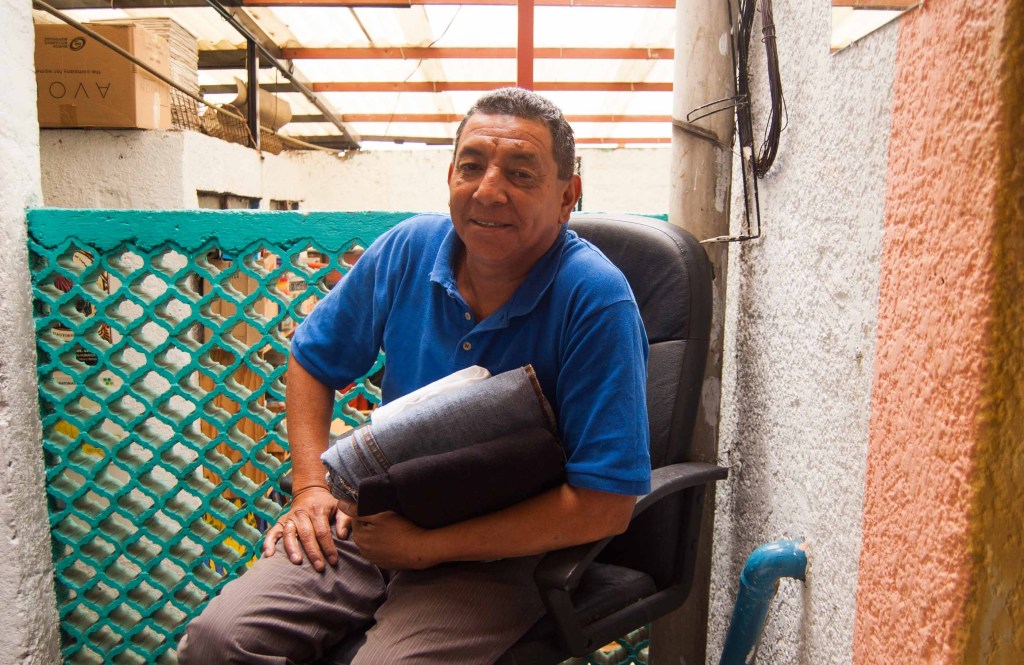The first time Gerardo, originally from El Salvador, came to the US, it was 1994. He crossed the border into Texas, then moved around the country to wherever he could find work until 2001, when he was deported home for not having papers. He didn’t stay south long, however. After a month working in Reynosa, Mexico, he decided to catch a taxi across the border.
“I bought a bottle of tequila and drank half of it,” Gerardo tells me, “and I got a taxi and told him to take me across. I spoke in English, and I told him I’m an American citizen.” The driver took him across the Puente Internacional, where he told the Customs officers that he was an American citizen and that his papers were stolen in the bar. “Finally, they believed me,” he says, “and gave me a paper that they stamped.” The taxi driver left him at his in-laws’ house in McAllen, Texas. At least for a time, Gerardo was home free.
Videos by VICE
Today, though, Gerardo doesn’t think that scheme would work. The last time he attempted to cross from Mexico to the US, three years ago, he was arrested. He spent two years in federal prison before being deported once again. Gerardo is now living in Casa Tochán, a migrant shelter in Mexico City. Many of the guests at the shelter have ample experience in moving between the US, Mexico, and Central America as undocumented immigrants. Amid a political climate plagued by sensational discussions of migration, these migrants have unique insight into the challenges of border crossing. Gerardo is currently seeking to regularize his migration status in Mexico rather than heading north to the US. He’s one of many Central American migrants who have decided it’s easier to build a life north of home but south of the US border.
In the past several years, Mexico has seen an increase in migrants from Central America. The UN High Commission for Refugees reported in 2016 that asylum requests in Mexico from migrants from the “Northern Triangle”—El Salvador, Honduras, and Guatemala—increased by 162 percent between 2013 and 2015. Some of them plan to pass through Mexico on their way to the US and stay because they run out of money or fall victim to crime or injury. Others flee violence in their home countries and hope all along to stay in Mexico.
Many of these Central American migrants have already been to the US and back several times. For these people, Donald Trump’s anti-immigrant stance represents a change in degree, not in kind. Like Gerardo, they know what it is to cross the border. They’ve traversed deserts and rivers—some being arrested in the process, some returning to attempt yet again.
Osman, another guest at Casa Tochán, first entered the US in 1989 hidden in the trunk of a friend’s car. Now, he says, the border is more formidable. He’s not particularly fazed by President Trump’s promises of a border wall, though. The presence of organized crime around the border poses a greater deterrent. “There’s not much difference with the wall,” he tells me. “They can’t keep watch everywhere.”
Still, border crossings have dropped dramatically since Trump’s election. According to an April 2017 report from US Customs and Border Patrol, arrests of border crossers dropped dramatically in this year’s first quarter. The number of migrants arrested in March 2017 decreased by 30 percent from the prior month and by 64 percent from March 2016.
Marvin lived in Boston for 20 years, and he’s crossed the US-Mexico border three times, spending a year and a half in prison after his last attempt. After leaving prison in November 2016, he was deported back home to El Salvador. Shortly thereafter, he began the journey north again. He, too, is regularizing his status in Mexico, but he hopes to return to the US again.
“It’s the luck of every person,” he says. “Now it’s really hard to cross, but it’s always possible.” He’s heard, though, that crossings are down. “I have friends who are coyotes, and before, they were taking across 60, 70 people every week. Now they’re taking across eight or nine. And they used to charge $7,500 or $8,500. Now they’re charging $10,000.”

Osman
Osman isn’t planning on returning to the US either. He lived in the US from 1989 to 2000, when he left voluntarily to go back to his home in Honduras. In 2015, Osman left Honduras again with the idea of working close to the US border, where he could make more money and take advantage of his English skills. He spent some time working in Nogales and later came to Mexico City to fix his papers. There, he saw opportunities to build a life. He’s regularizing his immigration status and starting a car-detailing business, and he hopes to bring his son after he earns enough to move out of the shelter.
What dissuaded Osman from going back to the US wasn’t increased security at the border but what life would be like beyond it: The threat of deportation looms greater than ever. “They take you out of your apartment now,” he says. “Before they didn’t do that.” He’s heard, too, that it’s getting harder to make a living as an undocumented immigrant. “There aren’t opportunities in the US anymore,” he says. “My family there, my friends and cousins and uncles, they tell me it’s hard to get work now.”
Being undocumented has always been a precarious way to live, but the increased targeting of migrants under Trump has further impeded building a stable life. “Before, it was pretty calm,” Gerardo says. He spent a total of 14 years in the US between 1994 and 2014. “Then, you could get a domestic flight, a Greyhound bus, rent an apartment without needing papers.” Now, Gerardo says, his family and friends tell him that fear of arrest severely limits daily activities. Still it’s always been hard to make it—but there’s always been a way. “Trump is the cat and we’re the mice,” Gerardo tells me. “And mice will always find a way to get in.”
More
From VICE
-

LONDON, UNITED KINGDOM – SEPTEMBER 9: Gene Simmons, Ace Frehley and Paul Stanley of American glam metal band Kiss perform on stage at Wembley Arena on their 'Unmasked' concert tour, on September 9th 1980 in London, England. (Photo by Pete Still/Redferns) -

By: Kevin Estrada/Shutterstock -

Lori Van Buren/Albany Times Union via Getty Images

